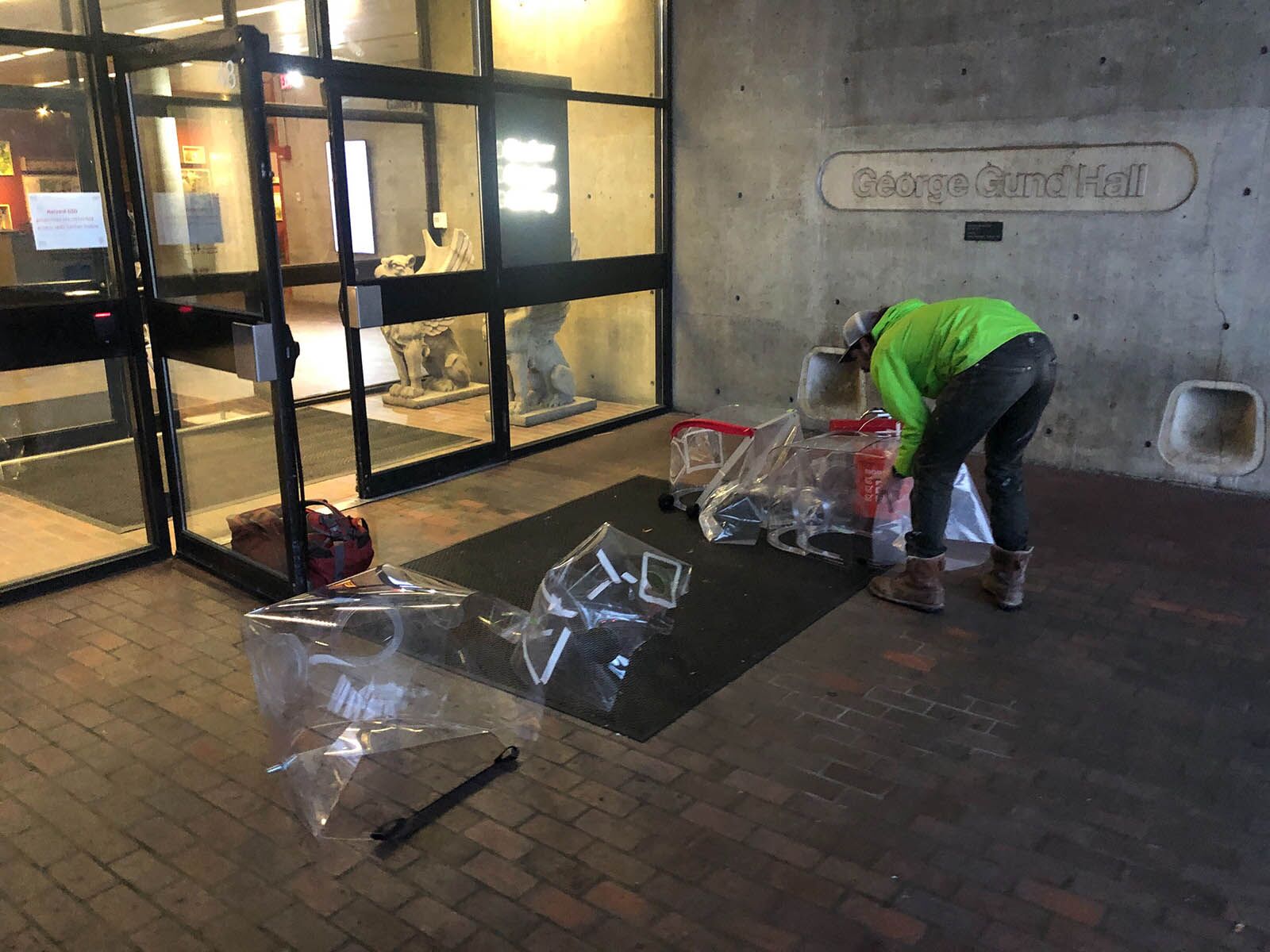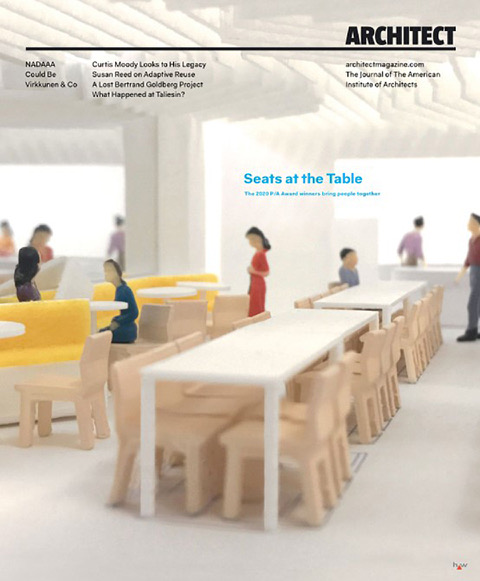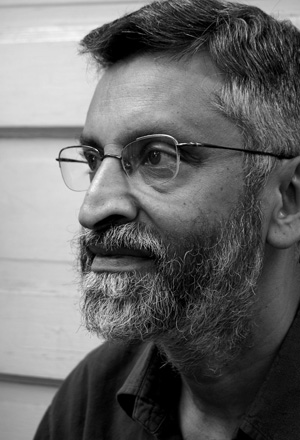Announcing faculty appointments and promotions in urban design, architecture, and landscape architecture
The Harvard University Graduate School of Design is pleased to announce the following faculty appointments and promotions effective July 1, 2020:

Charlotte Malterre-Barthes appointed Assistant Professor of Urban Design. Malterre-Barthes was previously guest professor in the Architecture Department of TU Berlin, Malterre-Barthes has directed, managed, and taught the post-graduate Master of Advanced Studies in Urban Design at ETH Zurich over the last six years. She is also co-founder of OMNIBUS, an urban design laboratory focused on interdisciplinary exploration of community-building factors in various metropolitans contexts. Charlotte’s teaching and research interests are related to how struggling communities can gain greater access to resources, the mainstream economy, better governance, and ecological/social justice. She believes that educators and universities have an obligation to be responsive to the challenges of our urbanizing world, equipping young practitioners and researchers with both critical skills and design tools to address them. Her pedagogy is built on a research-based design approach for identifying urgent aspects of contemporary urbanization. Charlotte holds a PhD in Architecture from ETH Zurich, and master’s and bachelor’s degrees in architecture from the National School of Architecture of Marseille (ENSAM).

Yasmin Vobis appointed Assistant Professor of Architecture. Vobis currently serves as visiting professor of architecture at The Cooper Union, and has previously taught at Princeton University and the Rhode Island School of Design. She sees the academy as an experimental platform for testing and exchanging ideas about architecture; rather than retreat from the issues of today’s political, social, and environmental context, her teaching aims to foster curiosity in these complexities and foster dialogue through design. Yasmin is co-principal of Ultramoderne, an award-winning architecture and design firm located in Providence, Rhode Island; the office is committed to creating architecture and public spaces that are at once modern, playful, and generous. Their view that architecture is not a boutique luxury, but plays an important role in all aspects of urban life, has driven them to mine the rich possibilities for contact between the discipline and the everyday. Yasmin received her bachelor’s degree from the University of California at Berkeley and her master’s degree from Princeton University’s School of Architecture.

Sara Zewde appointed Assistant Professor in Practice of Landscape Architecture. Zewde is a founding principal of Studio Zewde, a design firm practicing at the intersection of landscape architecture, urbanism, and public art. Sara’s practice and research start from her contention that the discipline of landscape architecture is tightly bound by precedents and typologies rooted in specific traditions that must be challenged. Sara most recently was Adjunct Assistant Professor at Columbia University’s GSAPP, and prior to that, she held an appointment as Race and Gender in the Built Environment Fellow at the University of Texas School of Architecture. She offers curriculum that is expressly connected to current sociopolitical debates, giving students an opportunity to actively take part in forming the links between their design education and the movements shaping the world they live in. Sara is a GSD alumna, specifically of the Department of Landscape Architecture; she also holds a master’s degree in city planning from MIT, and a bachelor’s degree in sociology and statistics from Boston University.

Stephen Gray promoted to Associate Professor of Urban Design. Gray has served as Assistant Professor of Urban Design since July 1, 2015. In addition to his role as Assistant Professor, Gray serves as the Co-Chair of the GSD Diversity Council. Gray also serves on the GSD Review Board, and is a coordinating faculty member for the GSD’s Design Discovery program.
Gray’s interests center on understanding political and cultural contexts of urban design; socio-ecological urban design approaches to resilience; and the intersectionality of humanitarian aid and urban design. His research and practice interrogate design’s contribution to, and complicity with, structural and infrastructural racism, and develop research and design methodologies that address issues of equity, access, social justice, and precarity at the scales of infrastructure, communities, metropolitans, and the globe.
Gray focuses his teaching primarily on the American city, and often on Boston and the Boston region. Gray’s courses include Elements of Urban Design and Cities by Design II, both of which Gray has been instrumental in re-orienting more explicitly toward questions of social equity, affordability, access, and socio-ecological resilience, as well as the political and procedural realities of urban design implementation. In Urban Design and the Color-Line, Gray interrogates urban design’s role in the production and elimination of structural racism and racial segregation in American cities. In 2015, he founded Grayscale Collaborative to further expand thinking and work at the intersection of urban design research and practice.
Gray earned a Bachelor of Architecture from the University of Cincinnati, and a Master of Architecture in Urban Design (MAUD) from the GSD, where he received the Thesis Prize for Urban Design and the Award for Outstanding Leadership in Urban Design. He has been tapped to serve on several Urban Land Institute (ULI) advisory panels, and has been nationally recognized by the American Institute of Architects (AIA) for his contributions to urban design thinking in the U.S. context with the National AIA Honor Award, the highest honor given to individual associate AIA members.

Holly Samuelson promoted to Associate Professor of Architecture. Samuelson has served as Assistant Professor of Architecture since July 30, 2013. In addition to her role as Assistant Professor, Samuelson serves as Co-Head of the Master in Design Studies in Energy and Environment. Samuelson also serves as one of the core faculty members for the Harvard Center for Green Buildings and Cities, and is a faculty advisor for the GSD’s Executive Education programs.
Samuelson’s research focuses on energy conservation and occupant behavior and health, utilizing computerized simulation to help the building industry mitigate and adapt to climate change while providing healthier spaces for occupants. Her work is characterized by a broad interdisciplinary lens and deep technical capacity on building performance simulation and its application/implication for architectural design and real estate. Samuelson’s courses include Environmental Systems in Architecture; Energy Simulation; Daylighting; and Environment, Economics, & Enterprise.
Prior to joining Harvard, Samuelson practiced full-time as a licensed architect and sustainable design consultant. As an architect, her work ranged in scale from a small museum for interactive art to a 100 acre master plan for Boston’s Fort Point Channel area with a primary focus on large-scale commercial buildings. She has worked on dozens of LEED projects and taught LEED workshops nationally and abroad. Her collaborative design work has been featured in the Boston Globe and honored by the Boston Society of Architects.
Samuelson earned a Doctor of Design and Master in Design Studies with distinction from the GSD, where she was awarded the Gerald M. McCue medal. She earned a Bachelor of Architecture with honors from Carnegie Mellon where she was awarded the American Institute of Architects Henry Adams Gold Medal. She has contributed articles to Building and Environment, The Journal of Building Performance Simulation, and The Journal of Environmental Management.
Yotam Ben Hur awarded KPF Foundation’s Paul Katz Fellowship
Harvard Graduate School of Design’s Yotam Ben Hur (MArch ’20) is one of two recipients of the Kohn Pedersen Fox Foundation’s 2020 Paul Katz Fellowship, an internationally recognized award that honors the life and work of former KPF Principal Paul Katz. The GSD’s Ian Miley (MArch ’20) was also recognized with one of two honorable mentions.
The KPF Foundation sponsors a series of annual fellowships to support emerging designers and advance international research. According to KPF, the Paul Katz Fellowship is given each year to assist international students in studying issues of global urbanism. The award is open to students enrolled in a masters of architecture program at five East Coast universities at which Katz studied or taught: Harvard, Princeton, Yale, Columbia, and the University of Pennsylvania.
KPF focuses each annual iteration of the Paul Katz Fellowship on a different global city. This year’s fellowship is tied to Mexico City; previous cities include Tel Aviv, Sydney, London, and Tokyo. Given the ongoing COVID-19 pandemic, KPF has announced that they will pause any travel requirements, and will distribute half of the $25,000 travel stipend as a financial award to each winner.
For the fellowship, Ben Hur submitted a research proposal examining the relationship between nature and architecture in peri-urban Mexico City with a concentration on the region’s informal settlements and their effect on the ecological water crisis the city is facing. Farshid Moussavi, professor in Practice of Architecture, was Ben Hur’s faculty advisor; Jacob Reidel, assistant professor in Practice of Architecture, and Eric Höweler, associate professor of Architecture, served as faculty reviewers.
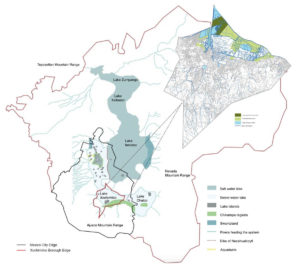
“My proposal was ignited by the accumulation of different experiences and lessons I’ve gained while being at the GSD,” Ben Hur says. Reflecting on his proposal, he emphasizes the value of looking outward into the countryside rather than remaining focused on urban or familiar surroundings. He considered the complexities and challenges of designing living spaces for high-density environments characterized by informal development, as well as what he describes as “our constant battle with climate change, and our desire to find balance between the natural and the built environments.”
“Mexico City has entered a stage in which, on the one hand, there is a great need for public works, housing, and service infrastructure for the peri-urban poor, and on the other, huge pressures are being placed to conserve the surrounding environment on the verge of a climate crisis,” Ben Hur writes in his research proposal. “In this constant battle between architecture and nature, between the need to urbanize land and the desire to conserve and restore the landscape, architects and planners must intervene and redefine the relationships between the two entities, to end the loss and offer a solution of coexistence—an approach that does not separate the two realities, but rather sees the informal settlements and the natural, protected areas as components of the same ecosystem.”

Ben Hur and Miley follow a legacy of GSD students who have been honored with the Paul Katz Fellowship, including 2019 winner Miriam Alexandroff (MArch ’19) and 2018 winner Sonny Xu (MArch ’18, MLA ’18).
The KPF Foundation also organizes other fellowships, lectureships, and education-minded programs. Last year, the GSD’s Peteris Lazovskis (MArch ’20) was among three recipients of the KPF Traveling Fellowship, earning a $10,000 grant to support a summer of travel and exploration before a final year at school.
2020 Graduating Student Award Recipients
Each year at commencement, the Harvard Graduate School of Design confers awards to graduating students that demonstrate exceptional scholarly achievement, leadership, and service. Congratulations to all the 2020 graduating student award recipients!
School-wide Awards
Gerald M. McCue Medal: Karan Saharya (MDes Critical Conservation ’20)
The Gerald M. McCue Medal is awarded each year to the student graduating from one of the school’s post professional degree programs who has achieved the highest overall academic record.
Digital Design Prize: Jia Jung (MArch I ’20)
The Digital Design Prize is presented by the Graduate School of Design to the student who has demonstrated the most imaginative and creative use of computer graphics in relation to the design professions.
Plimpton Poorvu Prize: MacKenzie Wasson (MArch I ’20) for his submission Building Biras: A Hurricane Adapted Caribbean Resort
The Plimpton-Poorvu Design Prize recognizes the top team or individual for a viable real estate project completed as part of the GSD curriculum that best demonstrates feasibility in design, construction, economics, and in fulfillment of market and user needs.
Peter Rice Prize: Peteris Lazovskis (MArch I ’20)
The Peter Rice prize honors students of exceptional promise in the school’s architecture and advanced degree programs who have proven their competence and innovation in advancing architecture and structural engineering.
Sinclair Kennedy Traveling Fellowship: Elena Brigitte Clarke (MDes Critical Conservation ’20) for study in Italy
The Sinclair Kennedy Traveling Fellowships support a full academic year of research at destinations outside of the United States.
Fulbright Grant: James Carrico (MArch II/MUP ’20) for study in Hong Kong
The Fulbright US Student Program is an international exchange program in the fields of education, culture, and science, offering advanced research, study, and teaching opportunities in over 140 countries.
Architecture Awards
American Institute of Architects Medal: Ian Miley (MArch I AP ’20)
The American Institute of Architects Medal is awarded to a professional degree student in the Master in Architecture graduating class who has achieved the highest level of excellence in overall scholarship throughout the course of their studies.
Alpha Rho Chi Medal: Milos Mladenovic (MArch I ’20)
The Alpha Rho Chi Medal, which is awarded to the graduating student who has achieved the best general record of leadership and service to the department, and who gives promise of professional merit through their character.
James Templeton Kelley Prize MArch I: Ian Miley (MArch I AP ’20) for “Stranger in Moscow: The Diplomatic Illusive
James Templeton Kelley Prize MArch II: Anna Goga (MArch II ’20) for “Porch House + 300 Panels, 400 Cuts, 400 Bandages”
The James Templeton Kelley Prize recognizes the best final design project submitted by a graduating student in the architecture degree programs.
Julia Amory Appleton Traveling Fellowship in Architecture: Radu-Remus Macovei (MArch I/MUP ’20)
The Julia Amory Appleton Traveling Fellowship is given to a student in the Department of Architecture on the basis of academic achievement as well as the worthiness of the project to be undertaken.
Kevin V. Kieran Prize: Nicolás Delgado Alcega (MArch II ’20)
Kevin V. Kieran Prize: Yotam Ben-Hur (MArch II ’20)
Kevin V. Kieran Prize: David Mitchell Kim (MArch II ’20)
The Kevin V. Kieran Prize recognizes the highest level of academic achievement among students graduating from the post-professional Master in Architecture program.
Dept. of Architecture Faculty Design Award MArch I: Euipoom Estelle Yoon (MArch I ’20)
Dept. of Architecture Faculty Design Award MArch II: Hee Young Pyun (MArch II ’20)
The Department of Architecture Faculty Design Award was established by the faculty of the Department of Architecture with the aim of recognizing significant achievement within a body of design work completed by a student at the GSD. This award is given to graduating students from each of the department’s two programs.
Landscape Architecture Awards
Thesis Prize in Landscape Architecture: Chelsea Kilburn (MLA I AP ’20) for “That Sinking Feeling: Subsidence Parables of the San Joaquin Valley“
The Landscape Architecture Thesis Prize is given to the graduating student who has prepared the best independent thesis during the past academic year.
2020 Landscape Architecture Foundation Olmsted Scholar: Nadyeli Quiroz (MDes/MLA I AP ’20)
Each year the faculty in the Department of Landscape Architecture nominates a student for the Landscape Architecture Foundation Olmsted Scholars Program. The program recognizes and supports students with exceptional leadership potential.
Norman T. Newton Prize: Siwen Xie (MLA I ’20)
The Norman T. Newton Prize is given to a graduating landscape architecture student whose work best exemplifies achievement in design expression as realized in any medium.
Pete Walker & Partners Fellowship for Landscape Architecture: Carson Fisk-Vittori (MLA I ’20)
Pete Walker & Partners Fellowship for Landscape Architecture: Danica Danielle Liongson (MDes Urbanism, Landscape, Ecology/MLA I 2020)
The Pete Walker and Partners Fellowship for Landscape Architecture is awarded to support travel and study for a graduating GSD student to advance their understanding of the body of scholarship and practices related to landscape design.
Jacob Weidenmann Prize: Jonathon Koewler (MLA I AP ’20)
The Jacob Weidenmann Prize is awarded to the student of the most distinguished design achievement graduating from the Department of Landscape Architecture.
ASLA Certificate of Merit: Michael Cafiero (MLA I AP ’20)
ASLA Certificate of Merit: Isaac W. Stein (MDes Risk & Resilience/MLA II ’20)
ASLA Certificate of Honor: Samuel Murdoch Gilbert (MLA I ’20)
Each year the faculty in the Department of Landscape Architecture nominates students for the American Society of Landscape Architecture Awards.
Charles Eliot Traveling Fellowship in Landscape Architecture: Andy Lee (MLA I AP/MUP ’20)
The Charles Eliot Traveling Fellowship is awarded annually as the highest honor by the Department of Landscape Architecture to one of its graduates.
Urban Planning and Design
Academic Excellence in Urban Planning: Amelia Muller (MUP ’20)
Academic Excellence in Urban Design: Soledad Patiño (MAUD ’20)
The Awards for Academic Excellence in Urban Planning and Urban Design honors graduating students from each of the programs who have achieved the highest academic record.
Award for Outstanding Leadership in Urban Planning: Emily McGovern Duma (MUP ’20)
Award for Outstanding Leadership in Urban Planning: Laura Greenberg (MAUD ’20)
The Award for Outstanding Leadership in Urban Planning and Urban Design honors graduating students from each of the programs who have demonstrated outstanding leadership during their time at the Graduate School of Design.
Urban Planning Thesis Prize: Margaret Haltom (MUP ’20) for “The Next Southern Landmark: A Roadmap to Confederate Monument Redesigns and RFP for the Site of a Former White Supremacist Statue“
Urban Design Thesis Prize: Justin Cawley (MAUD ’20), “Rescaling the University: Vertical Campuses and Postindustrial Urban Restructuring in Western Sydney“
The Department of Urban Planning and Design Thesis Prize is given to the graduating students in each of the programs who have prepared the best independent theses during the past academic year.
The Award for Excellence in Project-Based Urban Planning: Brett Alexander Merriam (MUP ’20)
The Award for Excellence in Project-Based Urban Planning is given to students who have demonstrated exceptional ability in urban planning projects including research and design studios throughout their course of study.
The Award for Excellence in Urban Design: Sarah Fayad (MLAUD ’20)
The Award for Excellence in Urban Design is given to students who have demonstrated exceptional design ability throughout their course of study in the Urban Design program.
AICP Outstanding Student Award: Juan Pablo Reynoso (MUP/MPP ’20)
The American Institute of Certified Planners Outstanding Student Award recognizes outstanding attainment in the study of planning by students graduating from accredited planning programs. The recipient of the award is chosen by a jury of planning faculty at each school.
Ferdinand Colloredo-Mansfeld Prize for Superior Achievement in Real Estate Studies: Patrick Braga (MUP ’20)
Ferdinand Colloredo-Mansfeld Prize for Superior Achievement in Real Estate Studies: Adriel Deller (MDes Real Estate & the Built Environment ’20)
The Ferdinand Colloredo-Mansfeld Prize for Superior Achievement in Real Estate Studies is awarded annually to a graduating student from any program who has exhibited superior academic accomplishment and leadership in real estate studies.
Druker Traveling Fellowship: Laura Greenberg (MAUD ’20) to study study Eco-Districts in the United States
Established in 1986, The Druker Traveling Fellowship is open to all students at the GSD who demonstrate excellence in the design of urban environments. It offers students the opportunity to travel in the United States or abroad to pursue study that advances understanding of urban design.
Design Studies
Dimitris Pikionis Award: Wilfred Guerron (MDes HPDM ’20)
The Dimitris Pikionis Award recognizes a student for outstanding academic performance in the Master in Design Studies degree program.
The Daniel L. Schodek Award for Technology and Sustainability: Xinzhu Chen (MDes Energy & Environments ’20)
The Daniel L. Schodek Award for Technology and Sustainability honors the memory and legacy of Professor Daniel Schodek and the standards of excellence he established during his 40 years of teaching and mentoring at the GSD. The award is given annually in recognition of the best Master in Design Studies thesis in the area of technology and sustainable design.
The Design Studies Thesis Prize: Angela Mayrina (MDes Art, Design & Public Domain) for “A Guidebook to an Empty Land: Kalimantan and the Shadows of the Capital“
The Design Studies Thesis Prize: Karan Saharya (MDes Critical Conservation ’20) for “In the Name of Heritage: Conservation as an Agent of Differential Development, Spatial Cleansing, and Social Exclusion in Mehrauli, Delhi“
The Design Studies Thesis Prize is given annually for the best thesis by a Master in Design Studies student.
Design Engineering
Overall Academic Performance: Mengxi Tan (MDE ’20)
The Overall Academic Performance award recognizes a graduating MDE student for outstanding academic performance in the Master in Design Engineering degree program.
Leadership and Community: Taylor Greenberg Goldy (MDE ’20)
Leadership and Community: Mia Zaidan (MDE ’20)
The Leadership and Community prize recognizes a graduating student who has displayed outstanding leadership and community building within the Design Engineering cohort and representation of MDE values to the larger world.
Outstanding Independent Design Engineering Project: Jacob Schonberger (MDE ’20) and Mengxi Tan (MDE ’20)
The Outstanding Design Engineering Project award honors one or more graduating MDE students who have presented the Design Engineering Project that contributes, in the most compelling way, to understanding and addressing a complex societal problem.
GSD participates in global, open-source effort to develop patient isolation hoods for Boston hospitals
Harvard University Graduate School of Design announces the rapid development of patient isolation hoods (PIH), in collaboration with clinicians at Mass General Brigham’s (MGB) Center for COVID Innovation and Boston Children’s Hospital (BCH). The GSD’s efforts have involved hundreds of designers, technical experts, and medical professionals from around the world in a community-led, open-source process, one that participants say could be a model for future modes of collaborative work and design.
Within two weeks, the design team was able to conceptualize and produce four flexible, lightweight PIH prototypes, delivering three to MGH on April 22 and one to BCH on April 24 for in-clinic evaluation. Patient isolation hoods act as a barrier between patients and healthcare providers to reduce providers’ risk of exposure to viruses and other contaminants during medical procedures.
Alongside the production of physical PIH, this collaborative process of design and evaluation has provoked reflections on the effort’s global, open-source, grassroots nature. Drawn from around the world and from various fields of study and expertise, more than 200 participants produced their designs and evaluations almost entirely via digital platforms, enabling the effort to be global in scope, rapid in pace, and uniquely collaborative.
“These patient isolation hoods are intended to be used in an environment that has extremely high and rigorous standards, and a normal structure and process of design and prototyping would take months or years to accomplish,” says Chris Hansen, digital fabrication specialist at the GSD’s Fabrication Laboratory . “Here, a design has been prototyped and put into a clinical environment in under a month. That was possible only by taking a new, non-hierarchical approach to design development, in which everyone is donating time and energy, and all stakeholders are empowered to make decisions independently.”
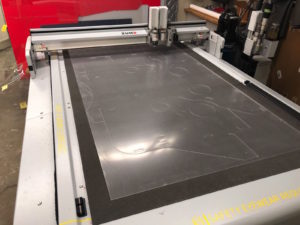
The GSD’s Fabrication Lab served as a production site throughout these PIH design efforts; equipped with CNC routers, laser cutters, Zund cutter, 3-D scanners, and other state-of-the-art technology, the Fabrication Lab ordinarily produces physical models for the GSD’s architecture, landscape architecture, urban planning, and urban design students and faculty.
These cross-institutional PIH efforts arose amid previously established, ongoing GSD work with the MGB Center for COVID Innovation, whose mission includes protecting front-line clinical staff and facilitating innovations that reduce the risk of COVID-19 transmission. Throughout March and April, the GSD—most specifically, its Fabrication Lab staff—produced thousands of 3-D-printed face shields and other personal protective equipment, or PPE, for MGB. By May 7, the GSD had fabricated close to 3,200 face shields and 2,200 face visors.
At the close of March, an ongoing Slack-based conversation among designers, doctors, and other contributors dedicated to PPE design had added PIH design to its focus. In consultation with participating doctors and clinicians, the collective team identified 25 critical design requirements for such hoods, including easy access for doctors’ arms and medical tools, rapid retractability in case of emergency, and negative air pressure, or suction, to move contaminants and air particles away from the attending doctor. Several days of meetings, design iterations, and test fabrication followed.
By April 10, after reviewing a series of PIH models, the team had developed consensus on one optimal design, dubbed “Apollo.” An “Apollo” prototype was delivered to Massachusetts General Hospital (MGH) on April 12 for clinical tests, after which it was approved for clinical use. Additional full-scale, fully operational “Apollo” prototypes were then fabricated at the GSD, three of them delivered to MGH on April 22 and one delivered to BCH on April 24. See an open-source compilation of “Apollo” design files via GitHub .
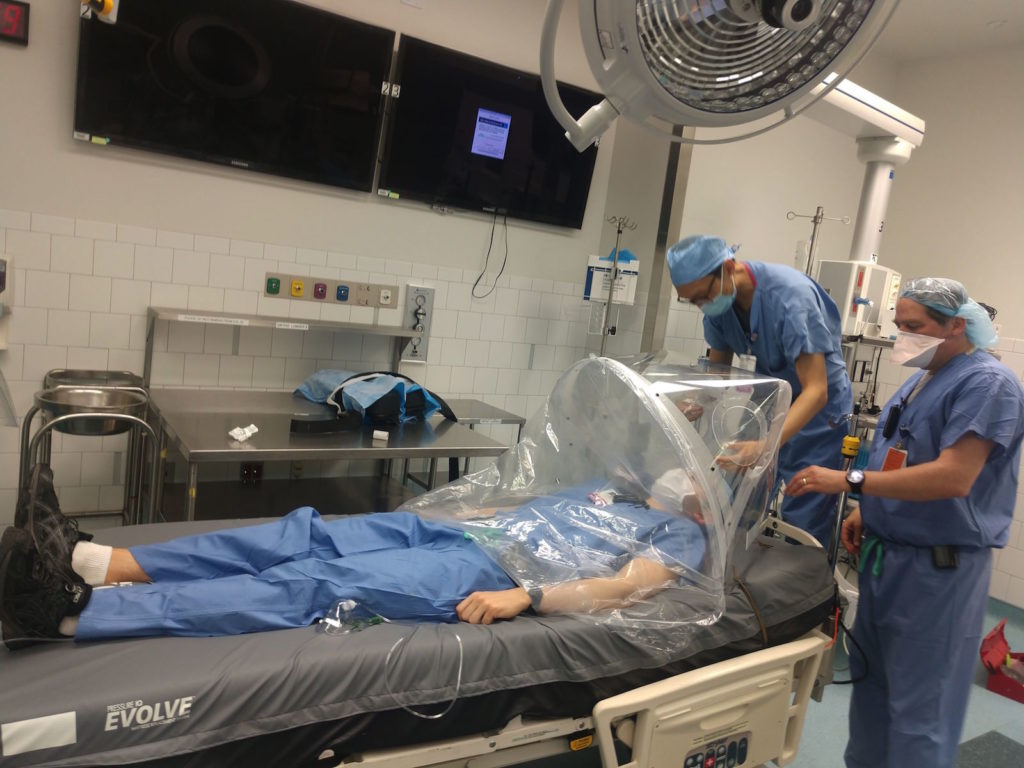
The design team’s various PIH prototypes are designed to function across hospital settings, whether emergency room, intensive care unit, or otherwise, and to allow ease of assembly, use, and disposal; they are composed of flat sheets of PETG plastic, with minimal need for joinery or panel construction. As an open-source design, the hoods can be fabricated anywhere in the world.
The PIH design and production process has inspired new perspectives on how design and medicine may join forces, throughout and beyond the ongoing COVID-19 crisis.
“The design process was unprecedented, partially because of the speed at which it was conducted, but also because of its ground-up, open-source, and collaborative design process,” observes Dr. Samuel Smith, MD, an anesthesiologist at MGH and instructor at Harvard Medical School (HMS) who participated in clinical review of these prototypes.
“Doctors and medicine need designers and design; good design leads to better, more effective equipment and resources, and eases physicians’ cognitive burden and fatigue. Despite the circumstances of this pandemic, the sight of so many doctors, designers, and others from around the world pooling expertise for the sake of a single effort has been empowering, giving us hope on many levels.”
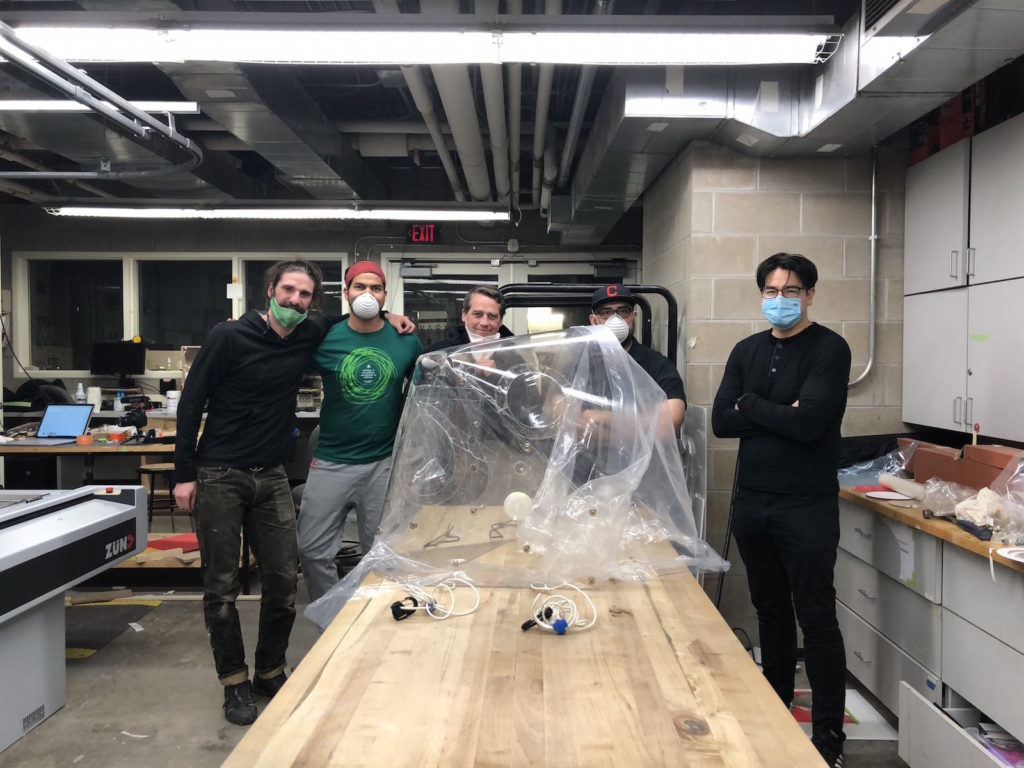
GSD names Jenny Odell the 2020 Class Day speaker
Harvard University’s Graduate School of Design has named Jenny Odell as its 2020 Class Day speaker. Odell will address the GSD’s Class of 2020 and their families during Harvard’s 2020 graduation exercises on Thursday, May 28. Odell’s talk is scheduled to begin approximately at 1:10 p.m. EST, to be streamed live on the GSD’s YouTube channel.

Artist and author Jenny Odell
Odell is an Oakland-based, multidisciplinary visual artist and writer whose work encourages close observation of the everyday. She has been an artist in residence at the San Francisco Planning Department, the Internet Archive, and Recology SF (a.k.a. “the dump”), and has exhibited at the Contemporary Jewish Museum, the New York Public Library, the Marjorie Barrick Museum (Las Vegas), Les Rencontres D’Arles, Fotomuseum Antwerpen, Fotomuseum Winterthur, La Gaîté Lyrique (Paris), the Lishui Photography Festival (China), and East Wing (Dubai). Her writing has appeared in the New York Times, New York magazine, the Paris Review, Sierra magazine, and McSweeney’s. Odell has taught studio art at Stanford University since 2013.
Odell’s New York Times-bestselling book, How to Do Nothing: Resisting the Attention Economy, was published by Melville House in 2019. The New York Times Book Reviews praised How to Do Nothing as “A complex, smart and ambitious book that at first reads like a self-help manual, then blossoms into a wide-ranging political manifesto.” The book was named a “best book of the year” for 2019 by a variety of critics and outlets, including Time magazine, The New Yorker, NPR, GQ magazine, Elle magazine, and Fortune magazine.
In 2016, feeling a sense of inability to create art, Odell found herself sitting and “doing nothing” in Oakland’s Rose Garden. It is there she formed the ideas that became How to Do Nothing, which she first discussed in a lecture at the 2017 EYEO technology conference and later posted on Medium, which went viral. In How to Do Nothing, Odell applies the lenses of art, philosophy, literature, historical events, and science to challenge readers to take a deeper look at the forces vying for our attention and how we respond. She describes human attention as the most precious—but the most overdrawn—resource we have. She observes that once people start paying a new kind of attention—one that transcends narratives of efficiency and techno-determinism—people can undertake bolder forms of political action, reimagine our role in the environment, and arrive at more meaningful understandings of happiness and progress.
To see a full schedule of 2020 Class Day and Diploma Ceremony exercises, please visit the GSD’s Commencement webpage.
March and April 2020 News Roundup
Bay State Commons Cohousing, a “typology-challenging 45,000-square-foot multifamily structure,” recently broke ground for construction. Designed by French 2D, an architecture studio co-founded by Assistant Professor in Practice of Architecture Jenny French, the project won a P/A Award from Architect Magazine. According to the studio, “The innovative 30-unit cohousing community is the first of its type under Malden’s newly created Cohousing Zoning Ordinance, the result of two years of incredible community work and support.”
A GSD team led by Montserrat Bonvehi Rosich, lecturer in Landscape Architecture; Seth Denizen, 2019–2020 Daniel Urban Kiley Fellow and lecturer in Landscape Architecture; and David Moreno Mateos, assistant professor of Landscape Architecture won a 2019 SOM Research Prize. Their project, “The Right to The Sewage,” will “evaluate the successes and failures of the Mezquital Valley as the world’s largest experiment in fertilizing agriculture with human wastewater. Almost 200,000 acres of land in the fertile Mezquital Valley are irrigated with the untreated sewage of Mexico City. The project will ask what hydraulic, soil, ecosystem, social, and policy conditions can increase chances for success and what its prospects for socio-ecological sustainability are.”
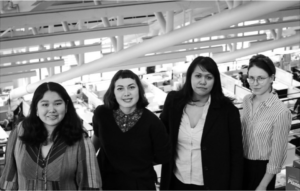
Zoë Toledo (MArch I ’23), Jaz Bonnin (MDes ’21), Heidi K. Brandow (MDes ’21), and Elsa Hoover (MArch I ’23)
Heidi K. Brandow (MDes ’21), Elsa Hoover (MArch ’23), Jaz Bonnin (MDes ’21), Zoë Toledo (MArch ’23), and Taylor Cook (MArch ’21) founded the Harvard Indigenous Design Collective (HIDC) with the mission to “support the education and work of our Indigenous architects, planners, designers, scholars, allies, and alumni of the Harvard Graduate School of Design. The HIDC promotes design by and for Indigenous communities as foundational to the history, theory, and practice of design fields on these Native homelands. The Harvard Indigenous Design Collective acknowledges that the land on which Harvard sits is the occupied territory of the Massachusett people, and a gathering place for nations since time immemorial.”
Nashra Balagamwala (MDes ’21) was named one of Forbes “30 Under 30” in The Arts. According to Forbes, Balagamwala “designed a board game to raise awareness about arranged marriage and its challenges. Other games she has created include Paltering Politicians, a card game that makes a statement about corruption and hypocrisy in politics.”
Michael Manfredi, design critic in Urban Planning and Design and expert-in-residence, and Marion Weiss, his partner at architecture firm Weiss/Manfredi, won the 2020 Thomas Jefferson Foundation Medal in Architecture. They are recognized for their work in redefining the relationship between landscape, architecture, and urbanism, which as UVA School of Architecture Dean Ila Berman notes, “not only underscores the significance that Thomas Jefferson attributed to these intertwined realms, but also speaks to the necessity, in our current age, to transcend traditional disciplinary boundaries and create newly integrated cultural-ecological paradigms.” Fellow recipients of this year’s awards include Sonia Sotomayor, associate justice of the Supreme Court; Dr. Rajiv J. Shah, president of the Rockefeller Foundation; and Ted Turner, media pioneer.
From 3D-printed face shields to strategies for a just recovery: How the Harvard Graduate School of Design community is contributing to COVID-19 response efforts
Amid the COVID-19 global pandemic, the Harvard Graduate School of Design community is working to leverage its skills and resources to contribute to response efforts. This website provides a centralized resource page for updates from across the GSD: news from the Fabrication Laboratory on production of Personal Protective Equipment (PPE) and other gear, relevant essays by leading design academics, remembrances of those we’ve lost, and other news from the GSD network.
News on Production of Medical Equipment
April 22, 2020: Face shield and Patient Isolation Hood (PIH) updates
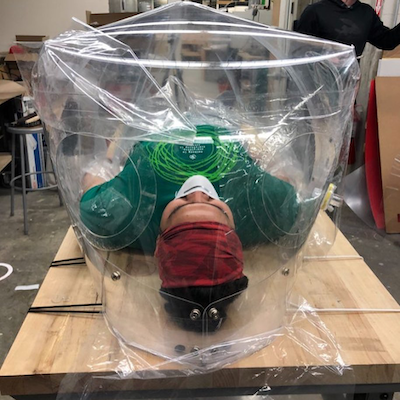
The Fabrication Lab has 3D printed 948 mounts/visor and laser cut 914 shields. As materials are replenished, staff will continue making gear in collaboration with what is requested by medical personnel.
Four Patient Isolation Hood (PIH) prototypes have been completed by a team led by GSD and Harvard colleagues working in the GSD’s Fabrication Lab. Three will be delivered to Massachusetts General Hospital and one will go to Boston Children’s Hospital for review.
April 15, 2020: GSD begins patient isolation hood (PIH) design and fabrication alongside ongoing PPE efforts
The GSD’s Digital Fabrication Specialist Chris Hansen has collaborated with an array of Harvard and GSD colleagues to design two PIH prototypes, fabricating them on April 13 and delivering them to Massachusetts General Hospital (MGH) on April 14. Hansen and colleagues spent much of April 15 on continued design and prototyping; by the end of this week, the GSD aims to have produced between 20 and 30 PIHs for a trial run in MGH’s intensive care unit. Read more.
April 7, 2020: GSD begins producing personal protective equipment (PPE) for Boston-area hospitals
With a stable of 3-D printers, other state-of-the-art fabrication technologies, and expert guidance from across Harvard University, the Harvard Graduate School of Design has begun production of personal protective equipment, or PPE, for front-line medical personnel at area hospitals. GSD fabrication began on April 5, and on April 6, the school delivered a first run of 90 face shields to Brigham and Women’s Hospital (BWH) and set up over one hundred 3-D printers in the school’s Gund Hall for continued production. Read more.
March 26, 2020: GSD’s Fabrication Lab facilities being considered for possible production of medical supplies

GSD Assistant Dean for Information Technology Stephen Ervin and 3-D Fabrication Specialist Chris Hansen have been in consultation with the newly formed Mass General Brigham (MGB) Center for COVID Innovation to explore whether and how the GSD’s Fabrication Lab facilities, including 3-D printers, might be put to work to address critical shortages in Personal Protective Equipment (PPE) for front-line medical personnel—PPE such as face masks, and diagnostic aids such as nasopharyngeal test swabs. Together with the GSD’s Martin Bechthold, Kumagai Professor of Architectural Technology and Director of the Doctor of Design Studies and Master in Design Engineering programs, Ervin and Hansen are coordinating with other Harvard partners. Read more.
Essays from GSD Scholars
Jeffrey Schnapp on the spatial logic of quarantine: “When the world is again unparked, will it know how to unplug?”

“Being grounded has a way of regrounding people’s values and I am persuaded that shelter-in-place policies are fostering a new hyperlocalism—a rerooting in situ that is likely to continue to favor walkable and bikeable mobility over long-distance displacements.” Jeffrey Schnapp holds the Carl A. Pescosolido Chair in Italian and Comparative Literature in the Faculty of Arts and Sciences and is also affiliated with the Department of Architecture at Harvard’s Graduate School of Design. Read more.
Resources for a just recovery from the GSD’s CoDesign Field Lab
“The coronavirus outbreak has both revealed and exacerbated structural inequities in American cities. Challenges faced by low- and moderate-income communities have escalated during the pandemic, with respect to housing insecurity, precarious work arrangements, lack of access to healthcare and affordable childcare, and a shortage of safe and healthy recreational spaces.” This post was written in the context of the Harvard Graduate School of Design’s project-based research seminar “CoDesign Field Lab: Program Evaluation for Change Leadership” (Spring 2020). Read more.
A radical transformation in building and designing for health is underway—but not everyone will benefit equally
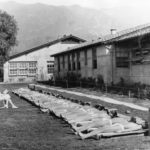
GSD faculty including Malkit Shoshan, Rahul Mehrotra, Stephen Gray, Martha Schwartz, Michael Hooper, and Chris Reed examine the positive and negative implications of designing for health, particularly for marginalized and oppressed communities. Read more.
The pandemic has caused an unprecedented reckoning with digital culture. Architecture may never be the same again (and why that’s okay)

Reflections on creating architectural culture online during the pandemic, based on interviews with members of the GSD community: Jeanne Gang, Antoine Picon, Jose Luis García del Castillo y López, Michelle Chang, Ana Miljački, Lisa Haber-Thomson, and Dan Sullivan. Read more.
Pandemics and the future of urban density: Michael Hooper on hygiene, public perception and the “urban penalty”

“Prior to the pandemic, I was intrigued by the relative lack of empirical, contemporary research on the relationship between hygiene and attitudes toward density. This gap was particularly interesting because there is a substantial body of fascinating tangential evidence that suggests people’s attitudes to urban density might be influenced by hygiene concerns.” Michael Hooper is Associate Professor of Urban Planning. Read more.
How to mitigate the impact of an epidemic and prevent the spread of the next viral disease: A guide for designers

“Designers play an essential role in the prevention, control, and response of many of these diseases, so getting involved is not a matter of a choice anymore, but a duty.” Dr. Elvis Garcia is an expert in epidemics and a lecturer in the Department of Architecture. Read more.
What role do planning and design play in a pandemic? Ann Forsyth reflects on COVID-19’s impact on the future of urban life

“For the past decades, those looking at the intersections of planning, design, and public health have focused less on infectious diseases and more on chronic disease, hazards and disasters, and the vulnerable. The current pandemic brings the question of designing for infectious diseases back to the forefront and raises important questions for future research and practice.” Ann Forsyth is Ruth and Frank Stanton Professor of Urban Planning. Read more.
In Memoriam
Michael McKinnell (1935-2020); Professor and Boston City Hall architect

Michael McKinnell, a fixture at the Harvard Graduate School of Design and in the architectural canon, died on March 27 at the age of 84 from COVID-19-induced pneumonia. He is survived by his wife, Stephanie Mallis (MArch ’78), and two daughters. As co-founder of Kallmann, McKinnell and Knowles, McKinnell’s built projects include Boston City Hall, Hynes Convention Center, and Harvard Law School’s Hauser Hall. At the GSD, he enjoyed a storied teaching career, joining the Department of Architecture faculty in 1966 and being named as the Nelson Robinson, Jr. Professor of Architecture in 1983, a role he held until 1988. Read more.
Michael Sorkin (1948–2020); Architect, designer, critic, pedagogue

Michael Sorkin died on March 26, 2020, at the age of 71 after contracting the coronavirus. For decades, Sorkin contributed inspiration, incisive criticism, and forward-minded design around the halls of the Harvard GSD. He studied at the GSD in the 1970s and taught there in 2002 and in 2015. He also participated in a variety of review panels and public programs over the decades, including 2015’s “Writing Architecture.” Read more.
GSD shortlists three architects for 2020 Wheelwright Prize
The Harvard Graduate School of Design has announced three shortlisted architects for the 2020 Wheelwright Prize. Now in its eighth cycle, the Wheelwright Prize supports innovative design research, crossing both cultural and architectural boundaries, with a $100,000 grant intended to support two years of study. Previous winners have presented diverse research proposals, including studies of kitchen typologies around the world; the architecture and culture of greenhouses; and material flows and techniques as used in the design and construction of film sets. The 2020 Wheelwright Prize drew 168 applicants from over 45 countries. A first-phase jury deliberation was conducted in early March; a winner will be selected in late April. Wheelwright Prize finalists traditionally present their work and proposal to an audience and panel of jurors at Harvard GSD, with a winner named in April. However, given the unprecedented global context created by the COVID-19 crisis, the 2020 Wheelwright Prize cycle is being conducted almost entirely via digital means. The first phase of jury deliberations was conducted via Zoom teleconferencing in early March, and finalist presentations will be conducted similarly throughout April. Such focus on digitally grounded dialogue mirrors similar efforts being applied across Harvard GSD and the field of architecture, as architects and designers confront a new landscape for practice and teaching. This year’s jury includes 2016 Wheelwright Prize Winner Anna Puigjaner; Harvard GSD’s Dean and Josep Lluís Sert Professor of Architecture, Sarah M. Whiting; Harvard GSD’s Chair of the Department of Architecture, Mark Lee; Harvard GSD Assistant Professor of Architecture Megan Panzano; British architect Tom Emerson; and Belgian architect Wonne Ickx.2020 Wheelwright Prize Finalists
The three finalists for the 2020 Wheelwright Prize, and their proposals, are: Daniel Fernández Pascual holds a Master of Architecture from ETSA Madrid, a Master of Science in Urban Design from TU Berlin and Tongji University Shanghai, and a PhD from the Centre for Research Architecture, Goldsmiths, University of London. His thesis Financial Littorals: The Architecture of Profit Margins and Ambiguous Lands investigated the spatial construction of the Spanish shoreline to track the ripple effects of the 2007-2008 real estate crisis. In 2013 he co-founded Cooking Sections with Alon Schwabe. Based in London, their work explores systems that organize the world through food. Using installation, performance, mapping and video, their research-based practice operates within the overlapping boundaries of architecture, visual culture, and ecology.
Since 2015 Cooking Sections have worked on multiple iterations of the long-term site-specific CLIMAVORE project, exploring how to eat as humans change climates. In 2016 they opened The Empire Remains Shop, a platform to critically speculate on the implications of selling the remains of Empire today. The eponymous book about the project was published by Columbia Books on Architecture and the City in 2018. Cooking Sections was part of the exhibition at the U.S. Pavilion in the 2014 Venice Architecture Biennale. Their work has also been exhibited widely; upcoming solo exhibitions will take place at Tate Britain and SALT Istanbul, as well as a new commission for P.5 New Orleans Triennial.
In 2019, Cooking Sections won the Future Generation Special Art Prize and were shortlisted for the Visible Award for socially-engaged practices. Cooking Sections currently lead a studio unit investigating critical questions around refuse and the metabolization of the built environment at the School of Architecture, Royal College of Art, London.
With proposal Being Shellfish: The Architecture of Intertidal Cohabitation, Fernández Pascual posits that, as awareness about the environmental footprint of construction increases, the intertidal zone can offer more responsive ways to inhabit the planet and provide regenerative materials. Seaweeds and shellfish are key sources of nutrients and have been used in construction over millennia, he observes. By looking at waste shells and seaweed material cultures in Chile, Taiwan, China, Turkey, Japan, Zanzibar, Denmark, and New Zealand, “Being Shellfish” continues Fernández Pascual’s ongoing investigation on ecosocial coastal innovations on the intertidal zone.
Daniel Fernández Pascual holds a Master of Architecture from ETSA Madrid, a Master of Science in Urban Design from TU Berlin and Tongji University Shanghai, and a PhD from the Centre for Research Architecture, Goldsmiths, University of London. His thesis Financial Littorals: The Architecture of Profit Margins and Ambiguous Lands investigated the spatial construction of the Spanish shoreline to track the ripple effects of the 2007-2008 real estate crisis. In 2013 he co-founded Cooking Sections with Alon Schwabe. Based in London, their work explores systems that organize the world through food. Using installation, performance, mapping and video, their research-based practice operates within the overlapping boundaries of architecture, visual culture, and ecology.
Since 2015 Cooking Sections have worked on multiple iterations of the long-term site-specific CLIMAVORE project, exploring how to eat as humans change climates. In 2016 they opened The Empire Remains Shop, a platform to critically speculate on the implications of selling the remains of Empire today. The eponymous book about the project was published by Columbia Books on Architecture and the City in 2018. Cooking Sections was part of the exhibition at the U.S. Pavilion in the 2014 Venice Architecture Biennale. Their work has also been exhibited widely; upcoming solo exhibitions will take place at Tate Britain and SALT Istanbul, as well as a new commission for P.5 New Orleans Triennial.
In 2019, Cooking Sections won the Future Generation Special Art Prize and were shortlisted for the Visible Award for socially-engaged practices. Cooking Sections currently lead a studio unit investigating critical questions around refuse and the metabolization of the built environment at the School of Architecture, Royal College of Art, London.
With proposal Being Shellfish: The Architecture of Intertidal Cohabitation, Fernández Pascual posits that, as awareness about the environmental footprint of construction increases, the intertidal zone can offer more responsive ways to inhabit the planet and provide regenerative materials. Seaweeds and shellfish are key sources of nutrients and have been used in construction over millennia, he observes. By looking at waste shells and seaweed material cultures in Chile, Taiwan, China, Turkey, Japan, Zanzibar, Denmark, and New Zealand, “Being Shellfish” continues Fernández Pascual’s ongoing investigation on ecosocial coastal innovations on the intertidal zone.
 Bryony Roberts is an architectural designer and scholar. Her practice Bryony Roberts Studio, based in New York, integrates methods from architecture, art, and preservation to address complex social conditions and urban change. The practice has been awarded the Architectural League Prize and New Practices New York from AIA New York as well as support from the National Endowment for the Arts, the Graham Foundation, the MacDowell Colony, and the American Academy in Rome, where Roberts was awarded the Rome Prize for 2015-2016. In tandem with her design practice, Roberts instigates research and publication projects about designing in response to social and cultural histories. She guest-edited the recent volume Log 48: Expanding Modes of Practice, edited the book Tabula Plena: Forms of Urban Preservation published by Lars Müller Publishers, and co-guest-edited Log 31: New Ancients. She has also published her research in Harvard Design Magazine, Praxis, Future Anterior, and Architectural Record.
Roberts earned her Bachelor of Arts at Yale University and her Master of Architecture at the Princeton School of Architecture, where she was awarded the Suzanne Kolarik Underwood Thesis Prize and the Henry Adams AIA Medal. She teaches architecture and preservation at the Columbia University Graduate School of Architecture, Planning and Preservation in New York.
With The Architecture of Childcare: A Global Study of Experimental Models, Roberts proposes an analysis of experimental models of care that hybridize programs to improve conditions for children, families, and care workers: childcare plus housing, childcare plus workplace, and childcare plus landscape. Comparing projects in Scandinavia, the UK, the US, Japan, and Southeast Asia through analytical drawings and contextual research, Roberts seeks to yield a global catalogue of new typologies.
Bryony Roberts is an architectural designer and scholar. Her practice Bryony Roberts Studio, based in New York, integrates methods from architecture, art, and preservation to address complex social conditions and urban change. The practice has been awarded the Architectural League Prize and New Practices New York from AIA New York as well as support from the National Endowment for the Arts, the Graham Foundation, the MacDowell Colony, and the American Academy in Rome, where Roberts was awarded the Rome Prize for 2015-2016. In tandem with her design practice, Roberts instigates research and publication projects about designing in response to social and cultural histories. She guest-edited the recent volume Log 48: Expanding Modes of Practice, edited the book Tabula Plena: Forms of Urban Preservation published by Lars Müller Publishers, and co-guest-edited Log 31: New Ancients. She has also published her research in Harvard Design Magazine, Praxis, Future Anterior, and Architectural Record.
Roberts earned her Bachelor of Arts at Yale University and her Master of Architecture at the Princeton School of Architecture, where she was awarded the Suzanne Kolarik Underwood Thesis Prize and the Henry Adams AIA Medal. She teaches architecture and preservation at the Columbia University Graduate School of Architecture, Planning and Preservation in New York.
With The Architecture of Childcare: A Global Study of Experimental Models, Roberts proposes an analysis of experimental models of care that hybridize programs to improve conditions for children, families, and care workers: childcare plus housing, childcare plus workplace, and childcare plus landscape. Comparing projects in Scandinavia, the UK, the US, Japan, and Southeast Asia through analytical drawings and contextual research, Roberts seeks to yield a global catalogue of new typologies.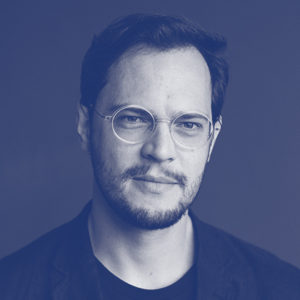 Born in Curitiba, Brazil, Gustavo Utrabo received a degree in architecture and urbanism from the Federal University of Paraná in Curitiba, Brazil, in 2010. In 2014, he also completed a specialization course in National History and Literature from UTFPR. Through his studio, Estúdio Gustavo Utrabo, he intends to expand the architecture field, connect people, and imagine the future through sustainable and inclusive approaches. These approaches come together in an extensive portfolio that has earned significant awards as the RIBA International Prize (2018), RIBA International Emerging Architect (2018), finalist status in Harvard GSD’s 2018 Wheelwright Prize, and a “Highly Commended” award in the Architectural Review Emerging Architecture Awards (2019), among others. Utrabo has contributed to lectures and other actions in institutions including IIT Chicago, University of Hong Kong, Future Architecture Platform at MAO museum in Ljubljana, RIBA London, and FAU-USP in São Paulo, among others. Utrabo recently served as a visiting professor in the Master of Arts program at the University of Hong Kong.
Eyeing intersections between culture, nature, and economics, especially amid ongoing climate change, Utrabo proposes an investigation into merging nature and culture through matter. With Rethinking Nature, Assembling Matter, he seeks an understanding of how wood, from its natural, raw status to its final use in architecture, can be used as a primordial resource to compose a cultural manifestation.
Born in Curitiba, Brazil, Gustavo Utrabo received a degree in architecture and urbanism from the Federal University of Paraná in Curitiba, Brazil, in 2010. In 2014, he also completed a specialization course in National History and Literature from UTFPR. Through his studio, Estúdio Gustavo Utrabo, he intends to expand the architecture field, connect people, and imagine the future through sustainable and inclusive approaches. These approaches come together in an extensive portfolio that has earned significant awards as the RIBA International Prize (2018), RIBA International Emerging Architect (2018), finalist status in Harvard GSD’s 2018 Wheelwright Prize, and a “Highly Commended” award in the Architectural Review Emerging Architecture Awards (2019), among others. Utrabo has contributed to lectures and other actions in institutions including IIT Chicago, University of Hong Kong, Future Architecture Platform at MAO museum in Ljubljana, RIBA London, and FAU-USP in São Paulo, among others. Utrabo recently served as a visiting professor in the Master of Arts program at the University of Hong Kong.
Eyeing intersections between culture, nature, and economics, especially amid ongoing climate change, Utrabo proposes an investigation into merging nature and culture through matter. With Rethinking Nature, Assembling Matter, he seeks an understanding of how wood, from its natural, raw status to its final use in architecture, can be used as a primordial resource to compose a cultural manifestation.

